Bilimbi (Averhhoa bilimbi), commonly known as cucumber tree or tree sorrel, is a tropical fruit bearing tree and is a close relative of star fruit (carambola). The tree as well as the fruit is popular by different names in different languages. In Guyana, it is known as “Soury”.
Bilimbi is cultivated throughout Indonesia, Malaysia, Philippines, Myanmar, Sri Lanka, Maldives, India and Central and South America. Bilimbi is quite different in its physical appearance, flavor and uses than that of star fruit.
Description Of Bilimbi Tree And Fruit
Bilimbi tree is attractive and at the same time is a long-lived tree. The tree reaches up to a height of 5-10 m. The leaves are bunch up at the branch tips and are 12-20 m in length. The leaves comprise of 11-37 alternate leaflets with pointed tips. The flowers are yellowish green in color and are borne in hairy panicles.
Bilimbi fruit is cylindrical and ellipsoid in shape. The fruit grows to a length of 4-10cm. The disc like seed is 6 mm wide. These fruits are green in color. It is juicy and crunchy. The fruit is mildly sour and juicy.
The fruits can be preserved by sun drying. The dried bilimbi fruits are called “asam sunti”, used in many Asian soups and curries. Most of bilimbi fruits taste sour due to high content of oxalic acid, except the “kamias” variety from Philippines which is sweet-sour and can be eaten raw. Since it is considered too sour to be eaten raw, bilimbi fruit is usually used in cuisines, such as salads, fish soups and curries. The high acidity gives refreshing taste to the cuisines. Meanwhile, bilimbi fruit is used in traditional medicine throughout Asia because of its high acidic properties.
Habitat Of Bilimbi
Bilimbi tree is found in tropical countries throughout the world. It is also cultivated in many parts of the Caribbean and central and southern America, where it is known as Mimbro. The Bilimbi tree grows best in warm, sunny climates, where temperatures are within the range of 23 to 30 degrees Celsius. It prefers well-drained, sandy soil.
Nutritional Value Of Bilimbi
This fruit contains most of the major nutrients required for the wellbeing of the body. It is rich in:
- Phosphorous
- Calcium
- Thiamine
- Iron
- Carotene
- Dietary fiber
- Niacin
- Protein
- Riboflavin
12 Health Benefits Of Bilimbi
Bilimbi plant has numerous health benefits, from the fruits, leaves and young stems. Bilimbi fruit consists of antioxidants and has astringent effect due to its high acid. As a result, here are some of the popular health benefits of bilimbi you never know before.
- Control hypertension – Hypertension is a condition associated with the rise of blood pressure in the arteries. A person is said to have hypertension when his/her blood pressure is consistently above 140/90 mmHg. Bilimbi fruit has been used traditionally to control hypertension. Bilimbi fruits are boiled with 3 cups of water until half of the water has evaporated, then the decoction can be taken once it’s lukewarm. It is advised to drink this decoction every morning.
- Controls diabetes – Bilimbi fruits are known to reduce blood sugar level. there are 2 ways of taking the benefits for controlling blood sugar level: first, making the bilimbi fruits into juice and drink it just like any other fruit juice. The second, boil mashed bilimbi fruits with 1 cup of water until half of the water is evaporated. Then take the decoction by straining the stew and drink it 2 times a day.
- Reduce fever and flu – Bilimbi fruit decoction is already used for centuries to treat fever. The flower is made into infusion for treating cold and cough. The high vitamin C in this fruit helps strengthen the immune system.
- Cough syrup – Bilimbi fruit extract has been added to cough syrup, due to its positive effects in reducing coughs and runny nose. the sour taste also make the cough syrup more palatable.
- Tropical analgesic- antibiotic treatment – The sap from young stems and the leaves are used in traditional medicine to reduce swelling, rheumatism, itch, and insect bites. The young stems and leaves are mashed with 3-4 cloves of garlic and made into smooth paste. The paste is applied to the affected area of the skin. The astringent effect will reduce the swelling and pain in rheumatism, also reducing the swelling caused by skin eruptions and insect bites.
- Treatment of mumps – Mumps (epidemic parotitis) is a disease caused by mumps virus. This virus attacks parotid salivary glands, can be one or both parotid glands. The disease results in painful swelling in parotid glands. Putting the paste of young stems and leaves of bilimbi with garlic (see point 5) can give positive effect in reducing the swelling.
- Treatment of allergies – Allergy is a condition caused by the hypersensitivity of the body’s immune system towards some particular things outside of the body. The particular things can be foods, drugs, air (causing allergic rhinitis and asthma), metals (causing dermatitis), etc. The symptoms may include red eyes, breathing disturbance, runny nose, itching on the skin, even more serious ones like Steven-Johnson syndrome. Drinking bilimbi fruit juice or bilimbi leaves infusion regularly can reduce the allergies.
- Treatment of inflamed hemorrhoids – Bilimbi fruit syrup can be used to treat any inflammations, including hemorrhoids. The astringent effect helps reduce rectal bleeding.
- Treatment of STD – In Malaysia, the sun-dried fruits and leaves are used to treat STD (Sexually Transmitted Diseases, aka Venereal Diseases). Some sun-dried fruits and leaves are boiled with 3 glasses of water until half of the water evaporates, then the decoction can be taken 2 times a day. The flower infusion is used to treat thrush (candidiasis).
- Tonic after childbirth – The bilimbi leaf infusion is used as a tonic after childbirth in Asia and Latin America.
- Reduce Pimples and Brighten Skin – The oxalic acid and vitamin A in bilimbi fruits helps reducing pimples, soothing the painful inflamed ones. Vitamin C helps make the skin brighter, reduce black spots and keep the skin tight because it promotes the production of collagen, a substance needed to keep the skin tones.
- Treatment of Obesity – In India, bilimbi fruits are used in traditional medicine to control obesity. native people believe that bilimbi fruit contains anti-hyperlipidemic agents, so it can prevent weight gain. As we already know, obesity can lead into various diseases. And it doesn’t look good either; obesity is frown upon in many cultures because it shows lack of self-control and lack of self-respect. Obesity also make our skin and hair look dull and old.
Caution To Take When Using Bilimbi
Bilimbi fruit juice contains high oxalic acid. The oxalic acid can form oxalate in our body. Oxalates has been known to cause tubular necrosis which leads to acute kidney failure. Therefore, we should not consume this fruit excessively. Just consume it moderately and the fruit will give you a healthy body.
Some Edible Uses Of Bilimbi
- The juice of this fruit is tangy and refreshing.
- Apart from that, bilimbi is used as a spice in cooking delicious and appetizing curries.
- It is used instead of mango for preparing chutney and is preserved.
Other Uses Of Bilimbi
- The wood is frequently used in carpentry.
- The fruit juice has high concentration of oxalic acid, useful for bleaching
Some Things To Make With Bilimbi
- Bilimbi pickle
- Bilimbi achar
- Bilimbi curry
- Bilimbi wine
Interesting Facts About Bilimbi
- Bilimbi tree bears hundreds of fruits every year.
- The sun dried bilimbi is called asam sunti.
- Bilimbi should not be eaten raw.
- The flowers of bilimbi tree are sometimes conserved in sugar.
About Bilimbi
Bilimbi is a tropical fruit bearing tree found in Indonesia, Malaysia, the Caribbean and other parts of the world. In Guyana, it is called SOURY and is used to make chutney achar and juice. In other countries, it is used to make wine, curries, toffee and so forth. Bilimbi is very acidic and is not recommended to be eaten raw. It’s packed with many nutrients and health benefits.
Article references:
- https://www.onlyfoods.net/bilimbi.html
- https://www.healthbenefitstimes.com/bilimbi/
- http://www.purenutritionfacts.com/bilimbi-fruit/
- https://drhealthbenefits.com/food-bevarages/fruits/health-benefits-of-bilimbi-fruit

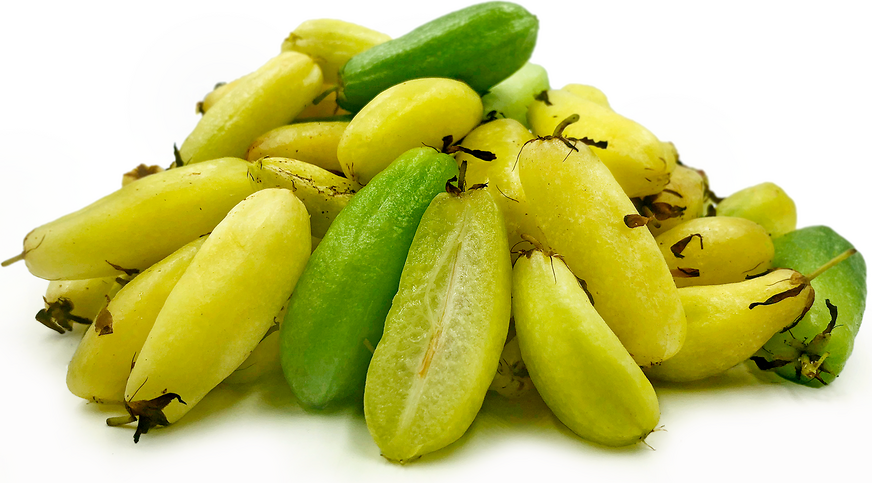
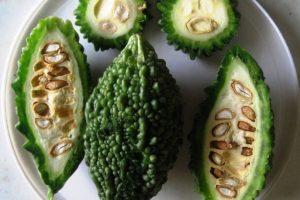
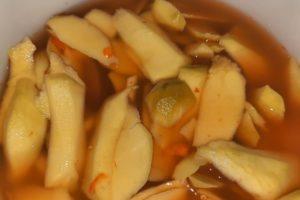

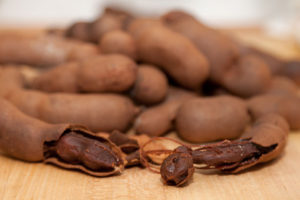

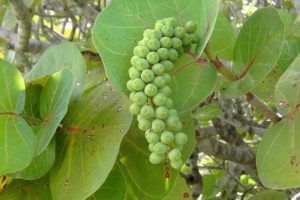
1 Comment